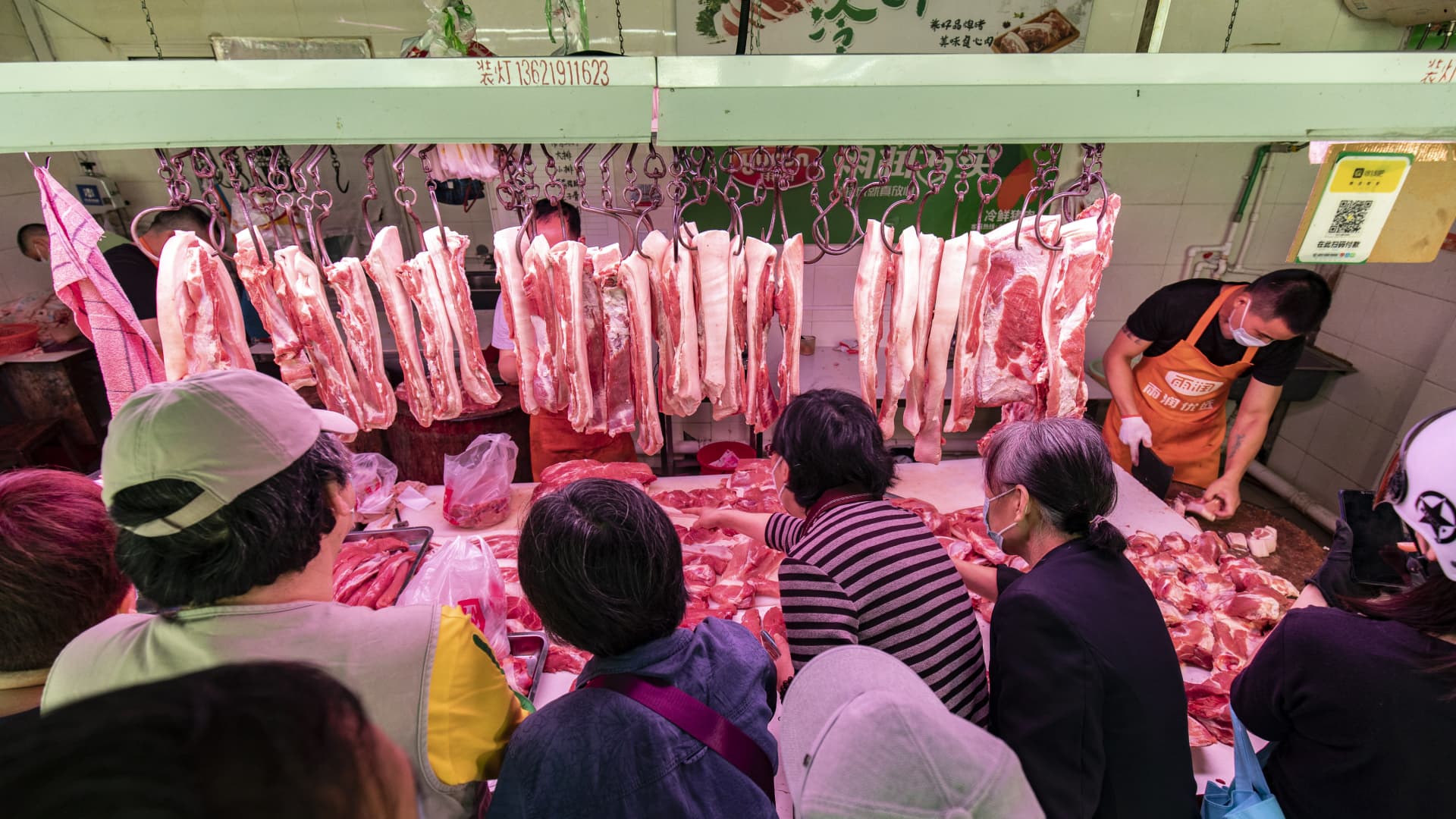BEIJING — China’s consumer price index hit a two-year high in July as pork prices rebounded, according to official data released Wednesday.
Prices of pork, a food staple in China, rose by 20.2% in July from a year ago. It marked the first increase since September 2020, according to official data accessed through Wind Information.
In fact, pork prices posted their largest month-on-month surge on record — up by 25.6%, the data showed.
Farmers’ reluctance to sell — in hopes of getting higher prices in the future — contributed to July’s pork price surge, said Bian Shuyang, agricultural products analyst at Nanhua Futures, in a statement.
Looking ahead, Bian expects it will be difficult for pork prices to surpass July’s levels.
Two Chinese holidays in September and October will help support consumer demand for pork, Bian said.
According to the analyst, live hog producers are now operating at a profit, an indication of more supply to come.
Pork prices have swung wildly over the last three years as hog farmers have had to battle deadly disease and many new producers.
Fresh fruit and vegetable prices also jumped in July, up by 16.9% and 12.9% from a year ago, respectively, according to the National Bureau of Statistics.
Ex-food price slump
While food prices rose, Wednesday’s inflation data continued to reflect lackluster demand in China’s economy.
The headline consumer price index rose by 2.7% in July, missing expectations for a 2.9% increase, according to analysts polled by Reuters.
The Covid outbreaks in many cities and the lack of further policy stimulus may have led to weaker growth in July.Zhiwei Zhangchief economist, Pinpoint Asset Management
“Non-food prices actually declined in July [by 0.1%] from their June level, which reflects weak demand,” Zhiwei Zhang, president and chief economist, Pinpoint Asset Management, said in a note.
“The Covid outbreaks in many cities and the lack of further policy stimulus may have led to weaker growth in July,” he said.
Despite the summer holidays, the tourism price component only rose by 0.5% in July from a year ago.
Covid outbreaks in the last few weeks have disrupted vacations with cancelled flights and venue closures in tourist spots ranging from Hainan island to the Tibetan plateau.
China’s CPI print for last month was still the highest since July 2020, when the index also rose by 2.7%, according to Wind data.
China’s inflation data has run far below that of the U.S., which is set to release its consumer price index data overnight. Economists polled by Dow Jones expect the U.S. consumer price index to rise by 8.7% in July from a year ago, down from 9.1% in June.
Wednesday’s data showed China’s producer prices continued to moderate, also coming in below expectations.
The 4.2% year-on-year increase reported for July missed the Reuters’ poll forecast of 4.8% growth.
“Falling PPI inflation also points to limited potential upside to CPI inflation” in China, Nomura’s chief China Economist Ting Lu said in a note.
— CNBC’s Patti Domm contributed to this report.
